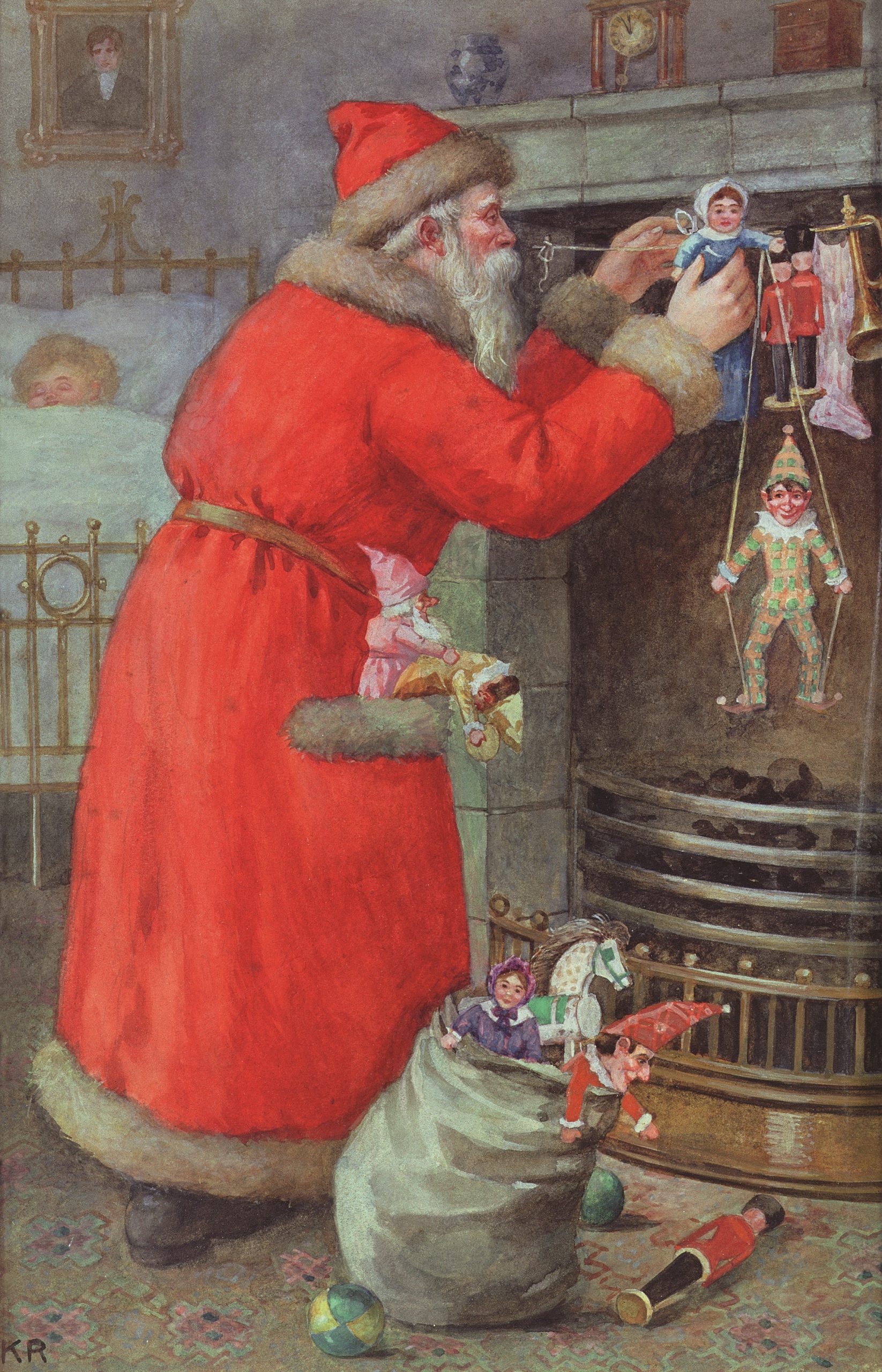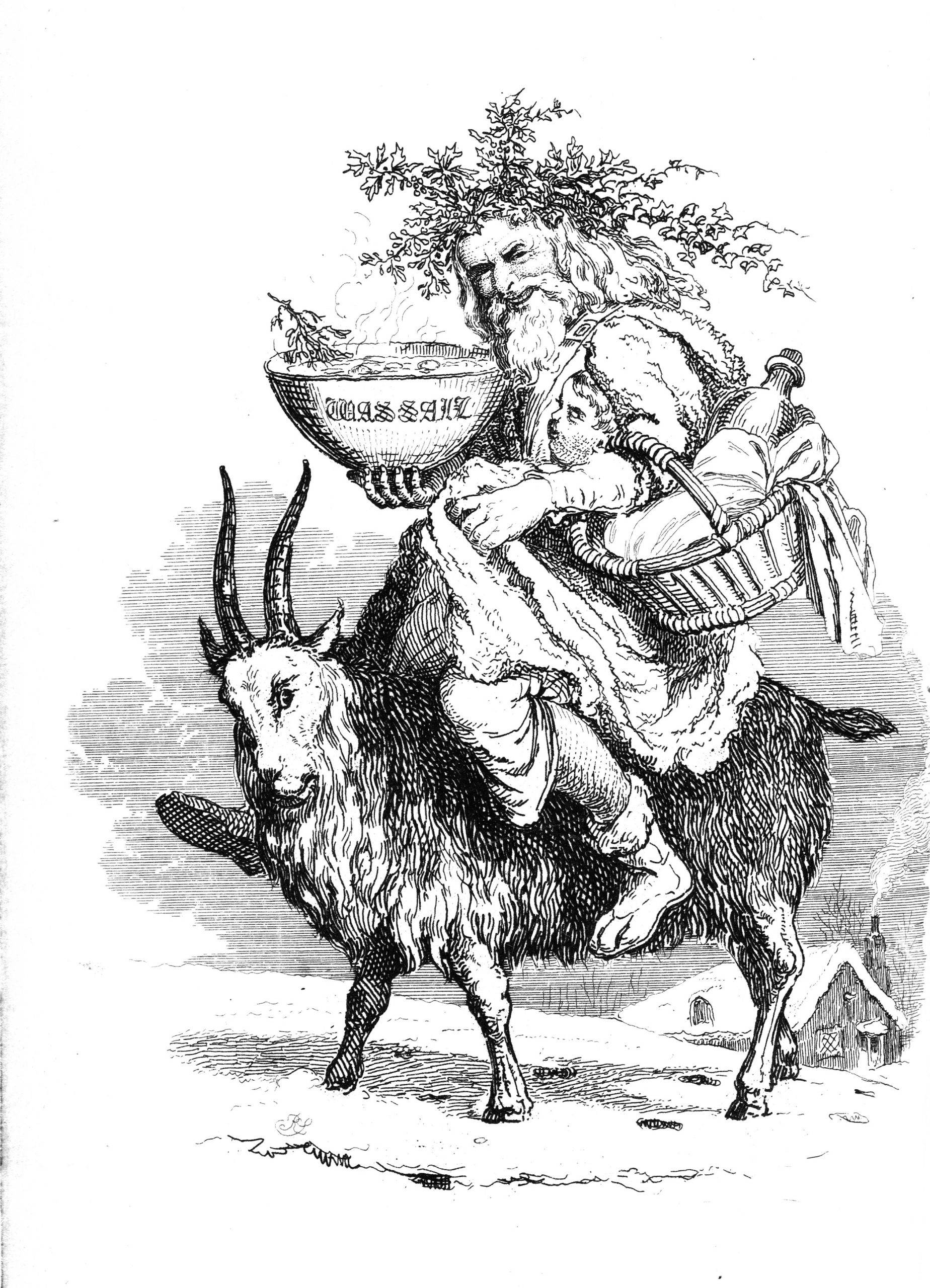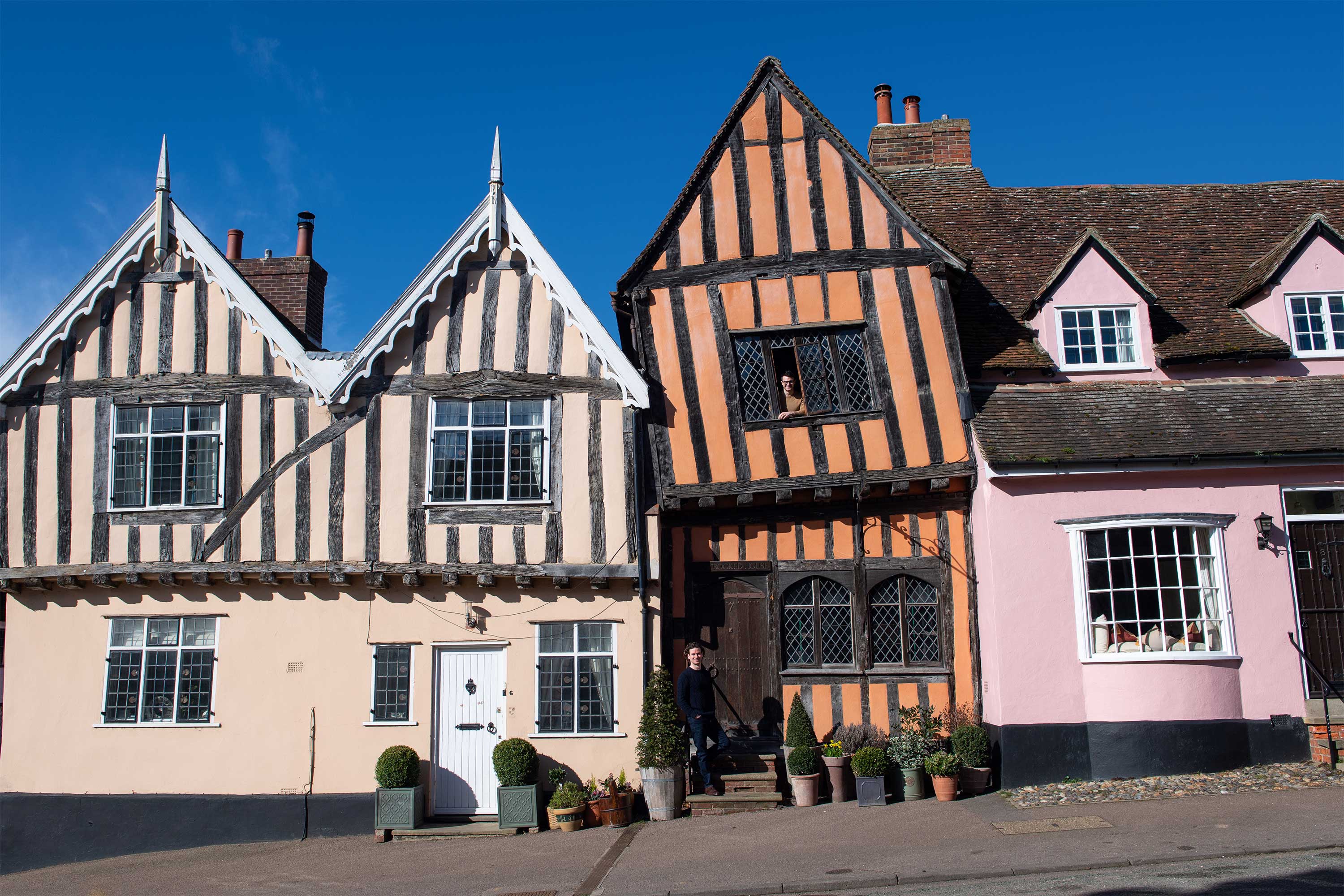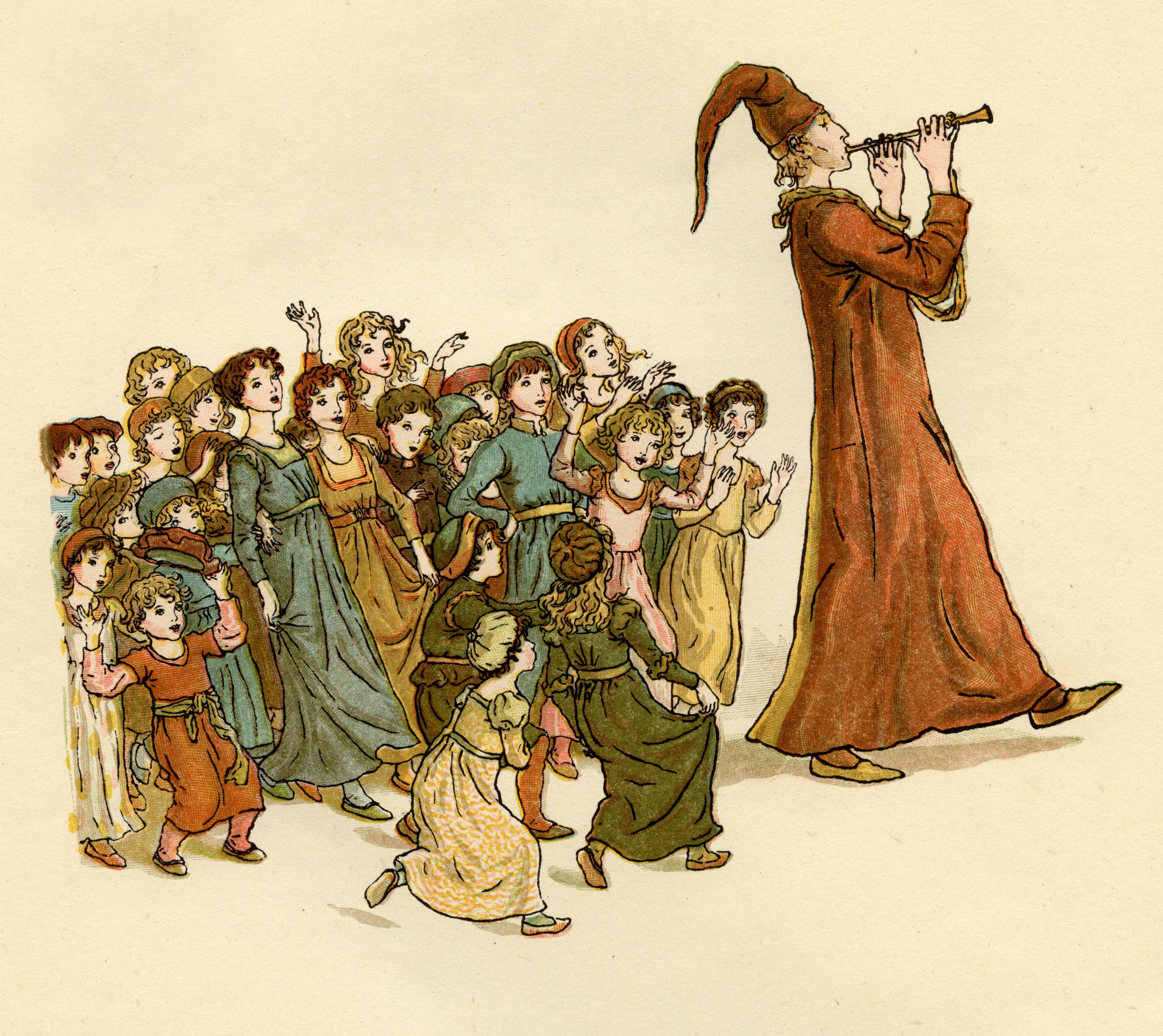Not so jolly old St Nicholas? The dark side of Santa
Father Christmas may be the rosy-cheeked, jolly character who personifies the fun of the festive season, but he’s had to overcome a few setbacks on the way, notes Ian Morton.


A mid-15th-century carol attributed to Richard Smart, rector of Plymtree in Devon, had ‘Sir Christemas’ announcing the birth of Christ and inviting his audience to drink and ‘make good cheer and be right merry and sing with us now joyfully. Nowell! Nowell!’. It is the first documented mention of a metaphorical character in charge of the festivities, the patriarch, who would eventually become our Father Christmas, although the use of Nowel (with one ‘l’ and derived from old French) was first recorded in English in the 14th century by Chaucer in The Franklin’s Tale.
During the Tudor and Stuart periods, the seasonal proceedings were presided over by a variety of figures, including the Lord of Misrule (‘All hail the Lord of Misrule’, January 4, 2023), who re-echoed the chaos of Saturnalia, the old Roman seven-day role-changing romp. Popular pageants featured Captain Christmas or Prince Christmas, with feasting and entertainment in grand houses, university colleges and the Inns of Court being conducted by the Christmas Lord. Except for tending to animals, work on the land ceased from December 25 to January 6 — marking the 12 days of Christmas. For the privileged, many seasonal features we embrace today were introduced at this time, including carols, personal gifts, mince pies (with 13 ingredients representing Christ and his apostles) and recognition of the Greek and pagan mistletoe fertility ritual. Henry VIII sampled turkey, as well as the traditional boar’s head and goose.
Surprisingly for one so well versed in courtly observances and the preoccupations and hey-nonny-nonny celebrations of ‘pretty country folk’, Shakespeare made scant reference to Christmas in his plays, only twice briefly in Love’s Labour’s Lost and once in The Taming of the Shrew, although he came fairly close in As You Like It with the song ‘heigh ho the holly’. Twelfth Night was written for performance at the end of the festivities, but offered nothing Christmassy at all. In his sonnets, his winter lines might have been graphic, yet the Bard gave Christmas no mention. Several Renaissance poets did, however, including Robert Southwell, John Donne and Robert Herrick.

The religious aspect of Christmas remained widely celebrated at this time. However, in the early 17th century, there occurred the first murmurings of unease among the devout that revelry was overtaking its true meaning. Presented at the Court in 1616 in support of James I, whose concern about social developments was well known, Christmas, His Masque, a satire by Ben Jonson based on traditional folklore, tilted at both the evident increasing commercial excesses and the hostility of the Puritan movement.
In 1638, The Spring’s Glory dramatist Thomas Nabbes opposed Puritan assertions that Christmas had run its course, declaring: ‘I am the King of Good Cheere and feasting though I come but once a year to reign over bak’t, boyled, roast and plum porridge.’ Yet the Puritans had their way, by banning Christmas and all its associated pleasures, and an anonymous 1646 drama ‘The Arraignment, Conviction and Imprisoning of Christmas’ recorded the crime of encouraging ‘wanton women’ to indulge in new gowns, hats and handkerchiefs with money ‘got out of their husbands’ pockets for household provisions’.
As the shutdown progressed, public resentment became palpable, which was reflected in the theatrical mood. In 1658, Josiah King took a spoof legal approach in The Examination and Tryal of Old Father Christmas, the first time our kindly paternal character was so named. For the defence, it was argued that ‘if at any time any have abused themselves by immoderate eating of drinking or otherwise spoiled the creatures, it is none of this old man’s fault, neither ought he to suffer for it’. The fictional jury acquitted him.
After the Restoration in 1660, the play was reissued, this time with the central character as ‘smug and pleased, his cherry cheeks appeared through his thin milk white locks… the true Emblem of Joy and Innocence’. Pepys recorded a ballad Old Christmas Return’d, in which the open house declared ‘come boyes and welcome, for diet the chief, plum pudding, goose, capon, minc’t pies and roast beef’. Christmas and its jolly seasonal patriarch had survived the recalcitrant years.
Exquisite houses, the beauty of Nature, and how to get the most from your life, straight to your inbox.

The next century — the Age of Reason, in which the educated elite sought to dispense with religious and folkloric tradition — saw a lull in the festive aspect. However, a literary hint of a Christmas comeback was signalled in Marmion of 1808, whereby Walter Scott wrote that: ‘England was Merry England when Old Christmas brought his sports again. T’was Christmas broach’d the mightiest ale. T’was Christmas told the merriest tale. A Christmas gambol oft could cheer the poor man’s heart through half the year.’
Carols were making a comeback at this time. The words for The First Nowell, believed to be of Cornish origin, were published in 1823 in Christmas Carols Ancient and Modern by William Sandys and Davies Gilbert, although the accepted tune was not rendered by John Stainer until 1871. The definitive Father Christmas was open to interpretation, for, in The Book of Christmas of 1836 by Thomas Kibble Hervey, he was portrayed by Robert Seymour, famed illustrator of The Pickwick Papers, as a sozzled crook-back figure riding a goat and carrying a wassail bowl. Hervey, editor of The Athenaeum literary magazine, invested his Father Christmas with offspring named Roast Beef, Plum Pudding and Wassail and lamented the loss of ‘uproarious merriment’. He asked readers ‘who know anything of the old, old, very old grey-bearded gentleman or his family to aid us in our search after them, and with their good help we will endeavour to restore them to some portion of their ancient honours in England’.
These were notably creative times, for, in 1843, came the biggest confirmation of Christmas of all time, the enduring Dickens allegory deriding meanness and promoting generosity, family celebration, the giving of gifts, adult indulgence and happy children. Hungry for seasonal cheer, the public adored it — and still does.

'Giving a gardener a tree for Christmas is akin to offering a kitten or a puppy'
Wondering what to give a green-fingered friend or family member for Christmas? John Hoyland, gardens adviser at Glyndebourne, has some

Britain's most eccentric crooked buildings, from the pub that looks tipsy to the church that leans more than the Tower of Pisa
Warped, twisted and wonderfully wonky, who can fail to be intrigued by the quirky glory of Britain’s medieval buildings? Rob

The stories behind the strangest phrases in English from being 'gone for a burton' to 'caught red-handed'
Learning a language is one thing, getting to grips with a pig in a poke is another altogether. Octavia Pollock
After some decades in hard news and motoring from a Wensleydale weekly to Fleet Street and sundry magazines and a bit of BBC, Ian Morton directed his full attention to the countryside where his origin and main interests always lay, including a Suffolk hobby farm. A lifelong game shot, wildfowler and stalker, he has contributed to Shooting Times, The Field and especially to Country Life, writing about a range of subjects.
